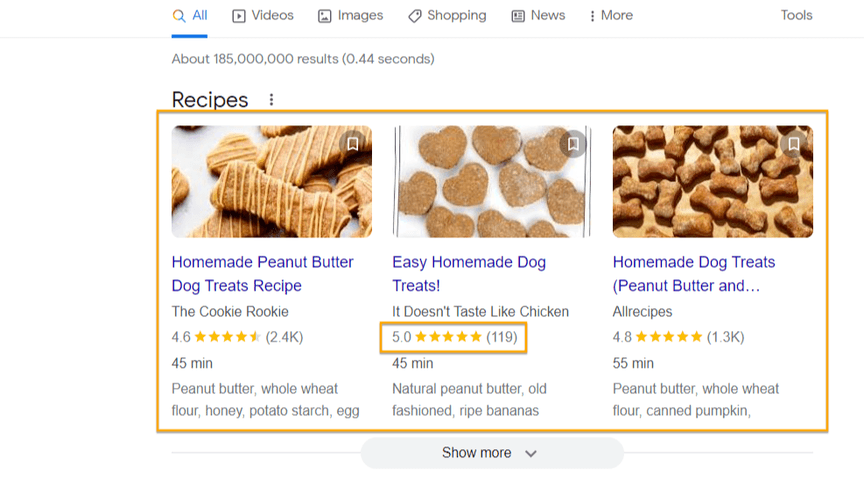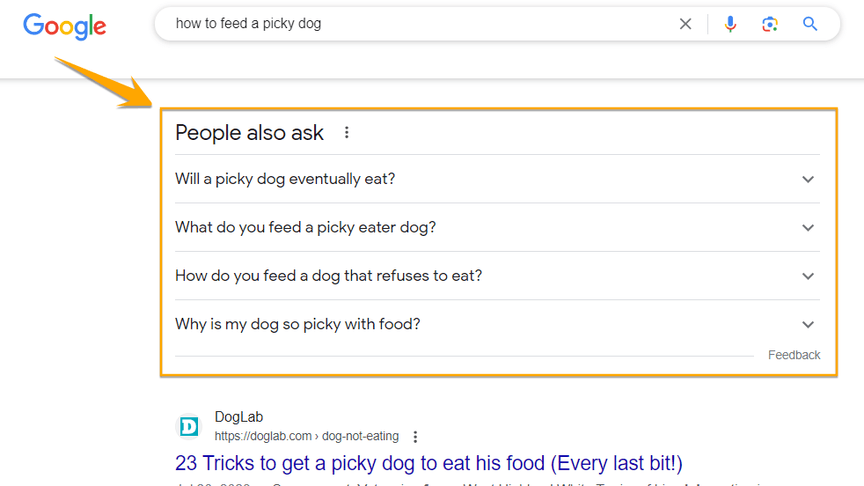Click-through rate (CTR) is one of the essential metrics that digital marketers track — from pay-per-click (PPC) ads to email marketing campaigns. This article focuses on CTR in SEO or organic CTR, and discusses these topics:
- What is click-through rate in SEO?
- What is the CTR formula?
- Why is CTR important for SEO?
- How to improve organic CTR
What is click-through rate in SEO?
Click-through rate (CTR) in SEO is a metric that shows the ratio of users who clicked on your page in the SERP to the number of users who saw your page in the SERP. Also called organic CTR, it is typically expressed in percentage.
What is the CTR formula?
The organic CTR formula is: (Number of Clicks / Impressions) x 100
For example, your page in the SERPs was shown to 10,000 searchers and 2500 users clicked on it. Here’s how it would look in the formula:
(2500/10,000) x 100 = 25%
The page’s organic CTR is 25%.
Why is CTR important for SEO?
A high organic CTR tells search engines that your listing is a relevant page that satisfies the user’s search intent. As a result, search engines may prioritize your page over other websites with lower CTRs.
A high organic CTR tells search engines that your listing is a relevant page that satisfies the user’s search intent.
In addition, your CTR also informs you how you can improve your SEO strategies. Are your meta title and description tags encouraging searchers to click your listing? Is your content targeting the right keywords and search intent?
By monitoring your organic CTR, you can optimize your meta title and description tags, and content structure to drive traffic to your site. As a result, you’re improving your SEO strategy and increasing your site’s chances to rank better in SERPs.
How to improve organic CTR
Now that you know what organic CTR is and why it’s important, let’s go through SEO CTR best practices:
- Write a title tag that appeals to search intent
- Optimize your meta description
- Use an optimized URL
- Use schema markup
- Structure content to appear as a featured snippet
Let’s go through each one:
1. Write a title tag that appeals to search intent
Your page’s title tag appears in the SERPs. Capture the searchers’ attention by writing a title tag that suits the search intent, and exercise creativity to encourage searchers to click your page. Here are some tips:
- Use the appropriate tone for your target audience and their search intent.
- Include the target keyword in your title tag
- Write a concise title tag by keeping it within 50 to 60 characters long
- Avoid writing clickbait headlines that mislead users
- Use power phrases to drive searchers to action
Depending on the type of content and your brand’s tone, you can use a variety of power phrases to:
- Pique searchers’ curiosity (Example: 20+ Halloween decoration ideas for $12 or less)
- Express urgency (Example: Hurry! 10% off Halloween decorations until 10/20)
- Give a sneak peek of benefits (Example: Decorate your home for Halloween without breaking the bank)
2. Optimize your meta description
Meta descriptions appear in SERPs along with the title tags.

Craft a meta description that satisfies search intent — without giving away all details — and encourages searchers to click. Here are some meta description tips that also double as SEO CTR best practices:
- Write concise meta descriptions in 160 characters or less
- Use unique meta descriptions for each page
- Add call-to-action (CTA) phrases
3. Use an optimized URL
Optimize your URL using descriptive slugs that provide searchers with context about your page. An optimized URL boosts your SERP listing’s credibility, thus attracting searchers to click. Here are some tips and examples to optimize your URL and improve your organic CTR:
- Include your target keyword. If your target keyword is “outdoor Christmas decorations,” here’s a sample slug: www.example.com/category/outdoor-christmas-decorations
- Keep it short. For example, your title tag is “20+ outdoor Christmas decorations for less than $80.” You can use a “/outdoor-christmas-decorations-under-80” instead of including every word in your title tag.
- Use hyphens to separate each word. Make it easy to read your URL by separating each word with a hyphen. Note that spaces are not allowed in URLs!
4. Use schema markup
Do you want your page to look more engaging in SERPs and increase your organic CTR? Use schema markup or structured data.
Schema markup is code that improves your page’s appearance in SERPs, allowing your page to show rich results. Check out this example:

The SERP clearly shows these pages as recipes. Each page also has an estimated preparation time and average star review rating, giving the searcher more details and encouraging them to click.
Some schema markups you can use are:
- Carousel
- Knowledge panels
- Breadcrumb navigation
5. Structure content to appear as a featured snippet
To continue on this list of SEO CTR best practices, let’s focus on optimizing for featured snippets. A featured snippet summarizes information at the top of a SERP, giving searchers a quick answer to their query. It’s also known as position zero.
You can increase your organic CTR by getting this coveted spot in SERPs because it appears at the top of the results and the first five SERP positions get 68% of all clicks.
Here are ways to appear as a featured snippet and increase your page’s chances of getting clicked:
- Create a clear content structure: Use subheadings to make your content easy to read. Search engines can pick up excerpts from your page when it’s organized. Your readers will also benefit from this best practice, as they can easily digest info from your page.
- Determine and answer popular questions related to your target keyword: Google’s SERPs typically have a “People Also Ask” section. Your content can appear in this section when you answer popular and related questions in short paragraphs within your content.

- Use bullet points or ordered lists when formatting your content if applicable: Search engines may pull your bullet points or ordered lists for related queries. Use an ordered list if you’re explaining a procedure. Bullet points are best for crucial points that don’t have to be followed sequentially.
- Mind your subheads: Use the proper HTML structure of your subheads. Your page’s headline must be formatted as H1. Use H2 to H4 subheads for the rest of your content, making sure they’re structured properly to create a hierarchy of information.
Drive more traffic to your site by improving your CTR
CTR is one of the critical metrics SEO professionals must track and improve. By monitoring and improving your CTR, you’re leading more people to your site, thus increasing your chances of getting more prospects to sign up as leads and turn into customers!
Looking to enhance your SEO performance? Discover how SEO.com can assist you in boosting your organic CTR and optimizing your overall strategy by contacting us today!
Let’s Drive Results Together 

Meet
Connect with us, today!
Writers

Related Resources
- What is Anchor Text? + 6 Best Practices to Optimize It
- What is Artificial Intelligence? 3 Key Uses for AI in SEO
- What is Black-Hat SEO? Definition, Techniques, and Why to Avoid It
- What is Bounce Rate? (And How to Improve Bounce Rate)
- What is Cloaking in SEO? Your Ultimate Guide
- What is Domain Authority (DA)? How to Use DA to Improve Your Site
- What is Duplicate Content, and How Does It Affect Your SEO?
- What is E-E-A-T and Why is It Important for SEO?
- What is Full-Service SEO?
- What is Keyword Ranking?


